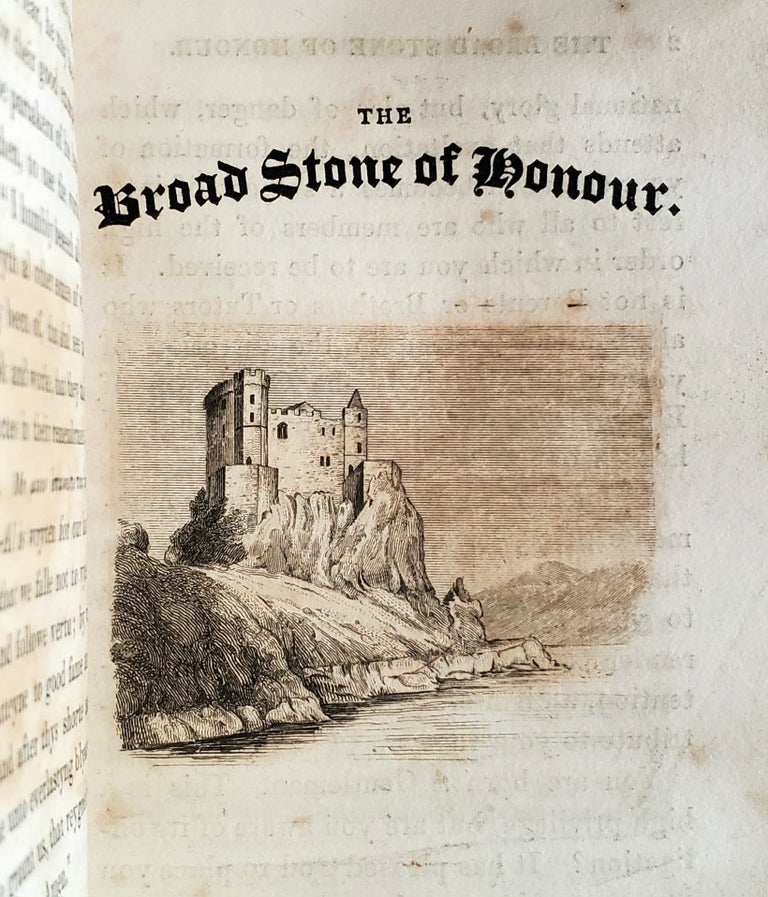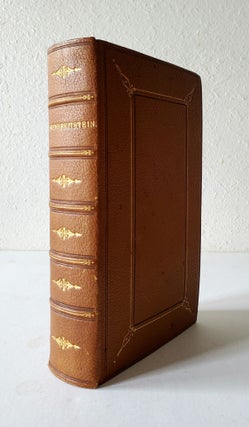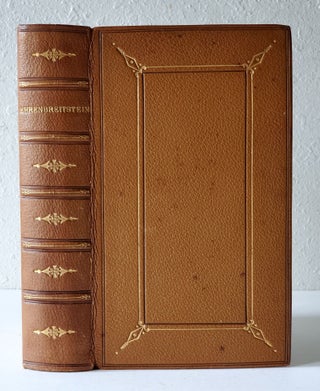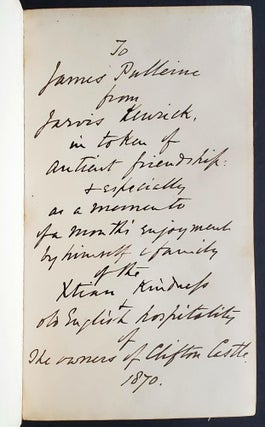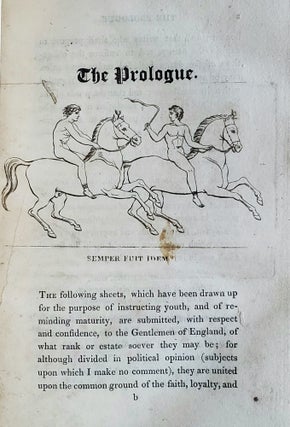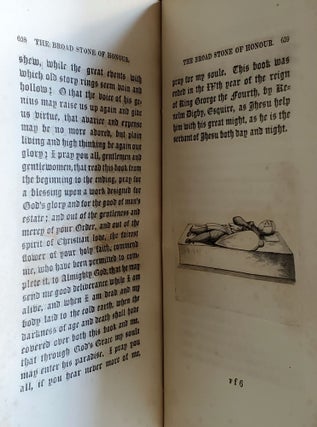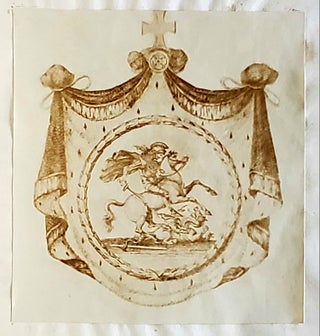The Broad Stone of Honour; Or, Rules for Gentlemen of England
London: C and J Rivington, 1823. Second edition. 12 mo. (7 3/4 inches tall), early pebbled brown morocco, gilt dentelles, marbled endpapers, top edge gilt, uncut. Binding sound, mild sporadic foxing, faint offsetting from illustrations, slight puckering to title page under pasted illustration. A nearly-fine copy. Item #1387
"YOU ARE BORN A GENTLEMAN. THIS IS A HIGH PRIVILEGE, BUT ARE YOU AWARE OF ITS OBLIGATIONS?"
Scarce second edition of The Broad Stone of Honour—Kenelm Digby's influential expression of the Knightly Virtues of Christian Chivalry and a harbinger of the Catholic Revival in England. This copy in a most handsome Victorian binding—with the Castle 'Ehrenbreitstein' gilt-stamped on the spine—and warmly inscribed for presentation.
Kenelm Digby "deserves to rank beside Newman, G.K. Chesterton and Hilaire Belloc, not merely in the front row of British Catholic, but of British literature" (Charles Coulombe). The Broad Stone of Honour was a collection of stories "drawn up for the purpose of instructing youth, and of reminding maturity." On a trip through the continent, Digby encountered Ehrenbreitstein, a ruined castle on the Rhine across from Coblenz, symbolical of the wanderings of the medieval knights. "This spectacular fortress, also lauded by Byron, Melville, and Washington Irving, would lend the English translation of its name—'Honour’s Broad-Stone' to Kenelm’s most famous book" (Coulombe).
Printed "with the alterations from the first Edition" of 1822, this second edition consists of: The Prologue, a lengthy introduction to "the six divisions: the Dignity, the Religion, the Virtue, the Profession, the Acquirements, and the External Conditions which are essential or suitable to the order of which you are a member," Chapter II. The Dignity of the Order, Chapter III. The Religion of the Order, Chapter IV. The Virtues of the Order, Chapter V. Professions. The book captivated a generation of young men in places like Oxford and Cambridge, "turning the eyes of the influential to the past" (Coulombe). In 1825, Digby entered the Catholic Church (a decade before the beginning of the Oxford Movement) "as did two of his best friends at Cambridge—Ambrose Phillips de Lisle, who would bring the Cistercians back to England, and Frederick Spencer, who eventually became a Jesuit and a great maker of converts" (Coulumbe).
With a title page printed in red-and-black and a Table ("or Rubrysshe") of Contents and illustrated with several small engravings, including St. George and the Dragon (mounted on the title page), "Semper Fuit Idem" (the Prologue), and the Castle Ehrenbreitstein. The epilogue, printed in Gothic "black letter," concludes with a final engraving of a knight's sculpted table stone. This copy was bound by H. Sotheran & Co. in full morocco with a single word stamped on the spine: "Ehrenbreitstein." and warmly inscribed for presentation in 1870 to James Pulleine of Clifton Castle, with thanks for "his Christian kindness and Old English hospitality." Digby continued to revise the book, further blending Catholic apologetics and chivalry, so that the final version was ultimately expanded to four volumes: Godefridus, Tancredus, Morus and Orlandus. Charles A. Coulombe. Kenelm Digby and the Catholic Revival (The Latin Mass Society of England & Wales, Summer 2019).
Price: $650.00

